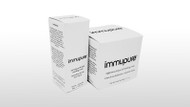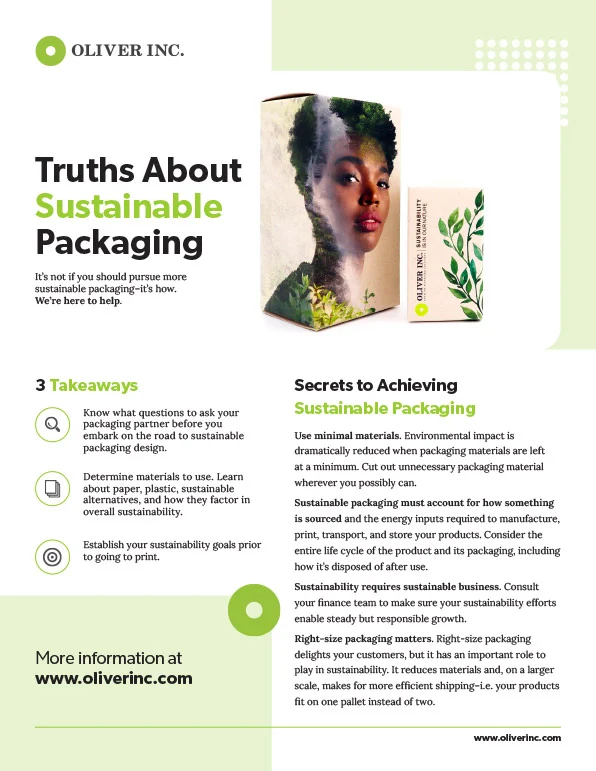Top Trends in Print Design for 2024
Posted by Oliver Inc. on 12th Jan 2024
Among the top packaging and print design trends for 2024, you’ll encounter the following:
- Digital printing is a cost-effective way to deliver personalized packaging designs for small and medium-sized print runs.
- Connected packaging creates memorable experiences for consumers that extend beyond just your physical materials.
- Minimalist packaging designs cut through the visual clutter of retail aisles, attracting consumers looking to quickly scan products on shelves.
- Sustainable packaging design remains in the limelight as an increasing number of brands respond to the growing number of eco-conscious consumers.
Digital Printing in 2024
Offset and “flexo” aren’t going away, but digital printing continues to offer brands benefits traditional methods cannot. Since it relies on digital files rather than cumbersome plates, digital printing has a faster turnaround time, simplifying the entire process.
Although traditional printing is more cost-effective with larger print runs, digital printing is less expensive for smaller projects because it bypasses the need to create physical plates.
Brands are turning to digital printing to take advantage of the customization and personalization variable data printing provides, as well. Ideal for temporary promotions or tailored marketing campaigns, variable data printing enables you to customize colors, fonts, and even imagery to deliver a singular packaging experience that consumers will remember.
For instance, you can adapt messaging to target specific regions or different language speakers while other design elements remain consistent.
Plus, brands are cashing in on digital printing’s ability to unlock new covert and overt anti-counterfeiting solutions, such as unique marks and microtexts nearly impossible for criminals to recreate.
Connected Packaging Is a Must
Packaging is no longer just a physical entity. Consumers expect their encounter with your brand or product to continue into the digital realm.
Facilitated by QR codes, hashtags, and barcodes, connected packaging further fosters brand loyalty, creating more immersive consumer experiences. Whether on their smartphones or other devices, this marketing development employs online questionnaires, games, exclusive offers, or social media campaigns to enrich the benefits consumers acquire when purchasing your products.
For example, specialty outdoor retailer and consumer co-op REI includes #OptOutside on much of its product packaging, encouraging people to take pictures of themselves using the gear during their recreational outings.
The results are powerful.
Instagram is flooded with images of outdoors enthusiasts featuring photos of their REI gear while they camp with friends or canoe across pristine lakes. This resonates immensely with consumers, while doing the seemingly impossible—bridging the digital world with the sometimes tech-adverse outdoors community.
Minimalist Style Cuts Through the Noise
Crowded packaging designs can be off-putting for consumers, worsened by the visual noise they encounter in busy retail aisles. It can overwhelm them, either generating a less-than-positive connection with your brand or discouraging them from purchasing a product altogether.
By contrast, minimalist packaging design speaks to consumers while helping your brand stand out on the shelf. Avoiding cacophonous design elements enables consumers to easily scan essential product information and focus on your branding cues.
Minimalist packaging becomes even more powerful when most of your competitors on the shelf still rely on loud packaging design in hopes of attracting consumer attention.
For example, Healthy Elephants, an organic vitamin supplement provider, relies on an elegant and straightforward folding carton design to outshine rivals in the retail aisles.
Sustainable Packaging Design Is Vital
It’s growing more and more difficult for brands to compete without prioritizing environmental stewardship, which means sustainable packaging design has taken center stage. In fact, the demand for post-consumer recycled plastic packaging is expected to increase threefold by 2030, according to a December 2023 report by global consultancy firm McKinsey.
The circular economy has gone mainstream, integrating the principles of “reduce, reuse, and recycle” and providing a more sustainable alternative to the traditional “linear economy,” which anchors around single-use plastics, extractive resourcing, and other wasteful practices that undermine forest health and biodiversity and exacerbate climate change crises.
Circular or sustainable packaging design, on the other hand, aims to create a closed loop, ensuring every process byproduct or material can be reused or directed toward a new purpose. Rather than add to landfills or contribute more greenhouse gasses to the atmosphere, sustainable packaging minimizes a brand’s impact on ecosystems and the communities in which they operate.
These are a few things you want to consider.
Employ Eco-Friendly Materials
While paperboard remains a staple for folding cartons, your timber-derived packaging should come from responsibly managed forests. Alternative choices, such as recyclable metallized paperboard and post-consumer paperboard, can be utilized, as well—further reducing the ecological impacts of deforestation and plastic containers that can’t be efficiently recycled.
When selecting materials, verify that your printing and packaging partner’s secondary packaging is sustainably sourced, as certified by the nonprofits Forest Stewardship Council (FSC) and Sustainable Forestry Initiative (SFI).
Adopt Right-Sized Packaging Principles
You can reduce the amount of waste your company produces by embracing right-sized packaging design principles. In short, it's about using only as much packaging as is necessary to secure and protect your products, from shipping and distribution to display on the store shelf and after consumers are finished with it.
Plus, the decreased amount of packaging saves on material and shipping costs. Why pay extra in shipping to deliver packaging with futile air pockets or excess material weight?
Use Sustainable Packaging Production
Whether it’s your facilities or those of your packaging partner, you can become a more sustainable company by reducing carbon emissions. Simplifying your supply chain makes auditing it for wasteful energy practices much easier. Collaborating with a domestic packaging supplier is a sure way to do that.
Consumers will have little knowledge of how green your packaging is unless you communicate your sustainability story to them through printed text in marketing collateral (brochures, catalogs, flyers, inserts, etc.) and directly on packaging material where it can easily be read.
Be honest with consumers and authentic about your sustainability initiatives; greenwashing can backfire significantly.
So, while you look for more ways to integrate connected features, digital printing, and minimalist print design into your packaging in 2024, don’t overlook the importance environmental responsibility has to your consumers.






